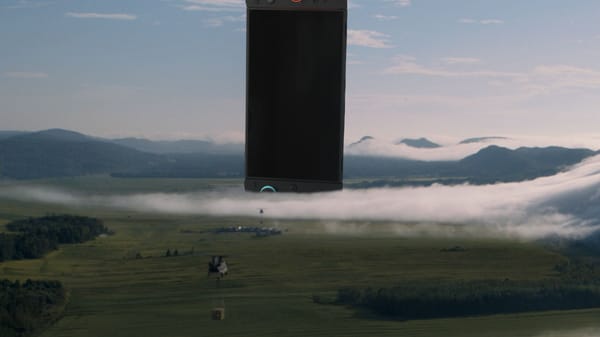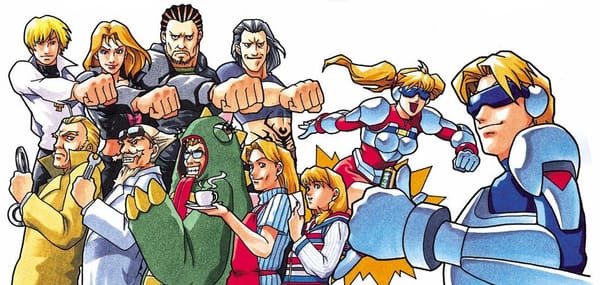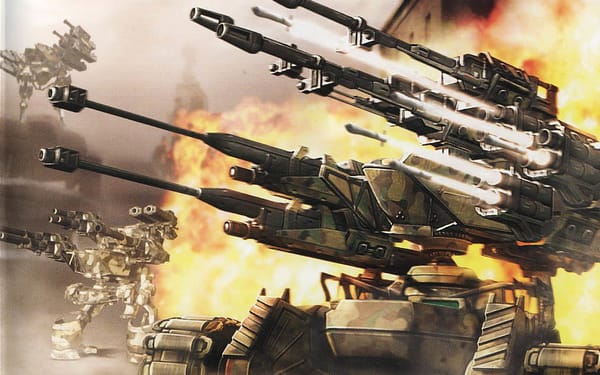Analogue hypes up groundbreaking N64 console (while quietly shoving openFPGA into the corner)
Also in this issue: a lovely Fire Emblem fan event full of cool romhacks, and a photograph of a videogame cartridge I recently paid a man $50 for.
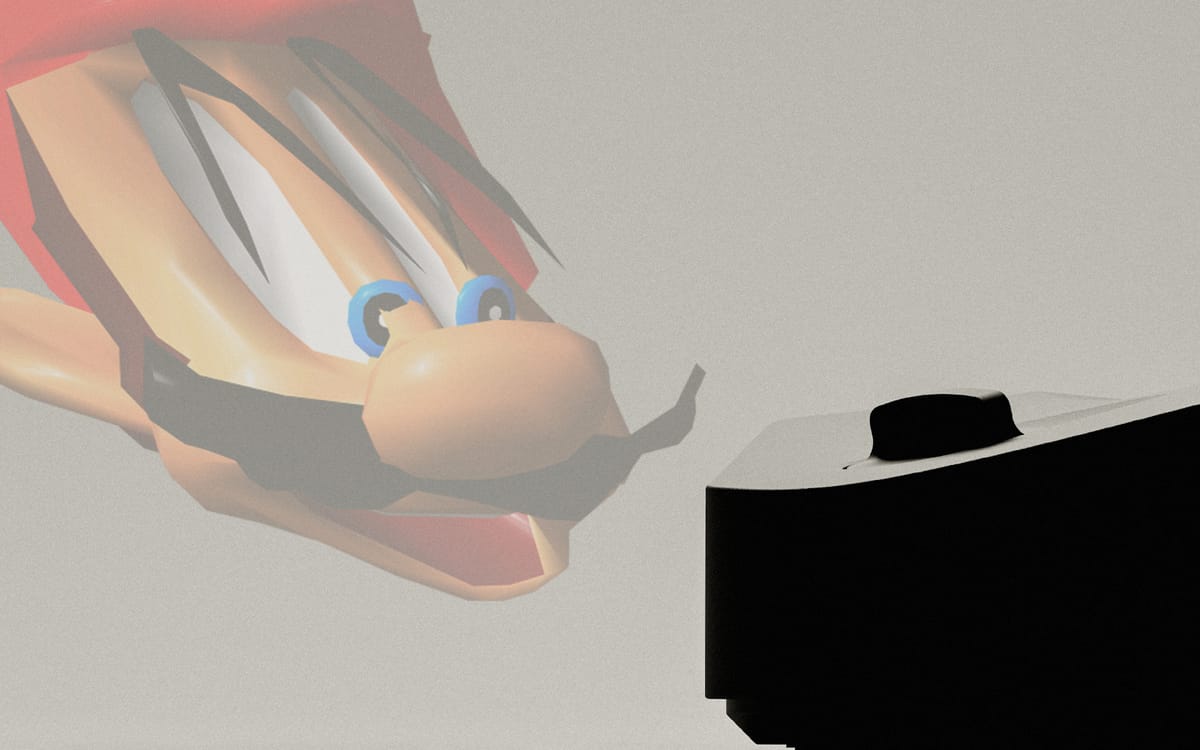
Did anything newsworthy happen this week? Like, say, the leading retro hardware company announcing a reborn Nintendo 64? 🤔 Analogue was pretty much guaranteed to grab the headline for this issue of ROM — while I’ve got some reservations about the company’s poor community dialogue and toe-dipping in and out of open source, it still makes some gorgeous hardware. That already makes a new Analogue system exciting, and this one could be a big deal — it will likely be significantly more powerful than any Analogue console so far and maybe moreso than the MiSTer, but how it’ll compare to MARSFPGA is the bigger question.
More on the Analogue 3D in the first of our big two! After that, something a little lighter — a bounty of Fire Emblem romhacks.
I’d love to load a few of these hacks up on my Analogue Pocket, though my gaming time has been in precious short supply since last weekend, when I played a whole lotta pinball at the great Portland Retro Gaming Expo. The highlight of the weekend turned out to be Space Jam, a table I’d never played before but really dug — it has just the right blend of solid gamefeel and gimmicks, with a couple baskets you can “dunk” a ball in.
Okay actually the real highlight was when my pal Hayden triggered a glitch in Gottlieb’s Super Mario Bros. pinball table when the ball got stuck and every tap of the left flipper automatically awarded him 10,000,000 points. We were breathless with laughter by the time he racked up 300 million just for flipping empty air over and over. I didn’t know scoring glitches like that were even possible in pinball!
On the last day of Portland Retro Gaming Expo I decided to hunt down a game I’ve long wanted to play but have never chosen to emulate or pick up on a modern system: Phantasy Star IV.
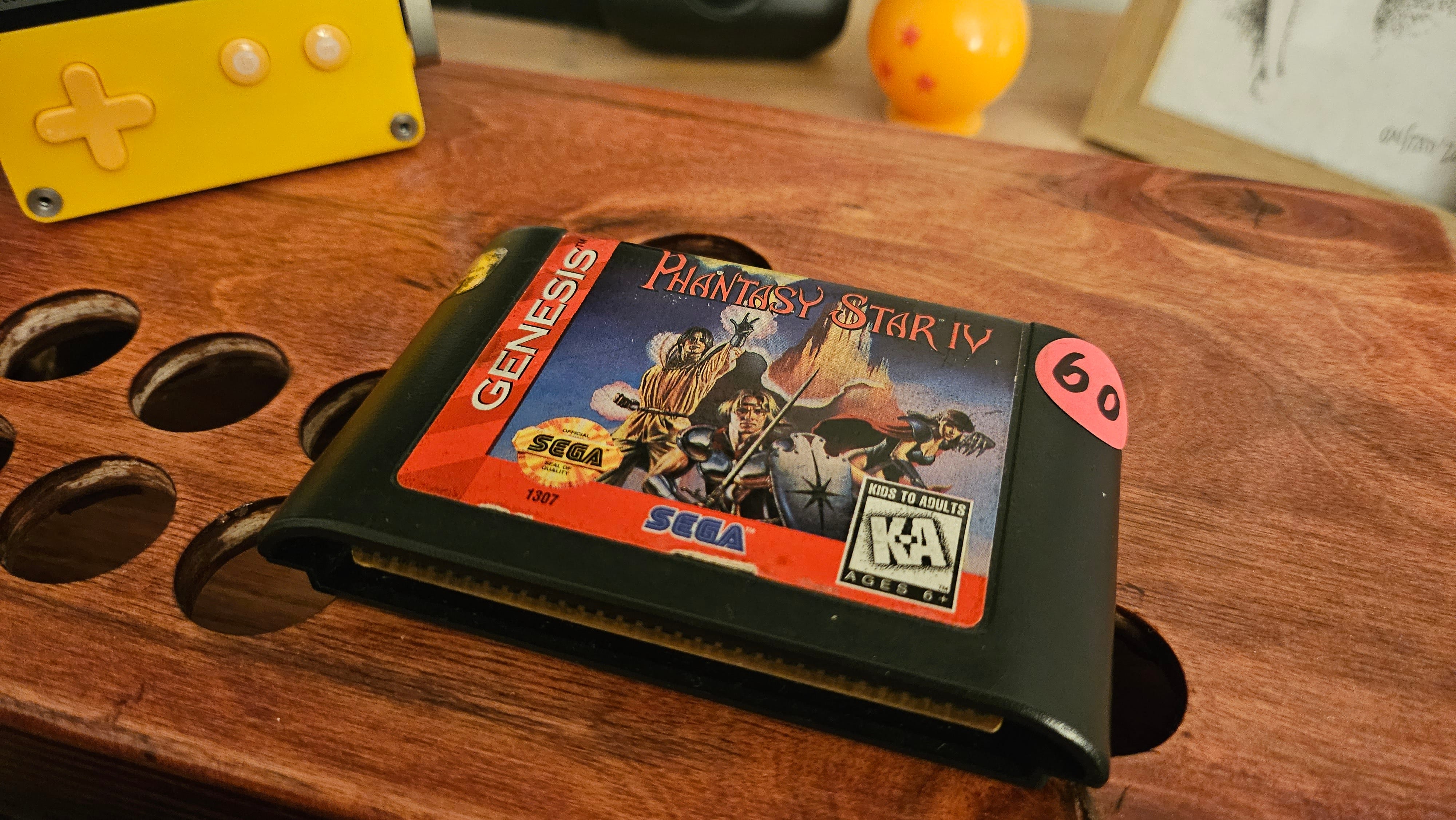
Turns out this classic Genesis RPG is pricey and not exactly easy to find: after scouring the vendor floor I ran into quite a few Phantasy Star IIs but far fewer IVs, and the first cart I laid eyes on was a yikes-inducing $90. It was kinda beat up, even. The boxed copy I found next was a literal-double-yikes $180, but at the end of the day I struck gold when I spotted a $60 cart (in better shape than the first!) that a quick Ebay search told me was a bit under average. That still felt a little steep for a game I could buy on my Steam Deck for literally $0.99, so I asked if he’d take $50 and walked away with a prize.
Much as I love emulation, I think I’ll be busting out the Genesis, RGB cables, and Retrotink 5X for this one!
There were several good emulation-related talks at PRGE this year, but none have been put online yet — hopefully by the next ROM there will be some links I can share. In the meantime, let’s get to this week’s business, including a new guest column from one of my former colleagues. 💽
Guest.cue: In 1999, Samuel Roberts discovered emulation after contracting Pokémon fever
My friend Samuel Roberts is the former editor-in-chief of PC Gamer magazine and now hosts the fantastic gaming-focused podcast The Back Page with fellow UK games media veteran Matthew Castle. I recommend the Patreon for its generous two extra episodes per month, and Back Page in general for fun reminiscing about the days of gaming magazines, and the "best games for X console” draft episodes that reveal Sam to be an expert in psychological warfare. And I’m not just saying all this because I was on an episode!
Pokémon Red and Blue | 1998 | Developer: Game Freak | RPG
An entire year separated the North American and European releases of the original Pokémon games, and it was agony. By the spring of 1999 word of Pokémon fever reached me through British games media, and the anime had started airing – but the games would have to wait until October to be released here. I remember reading a feature about how choosing the starter Pokémon worked in terms of elemental strengths and weaknesses that completely captured my imagination. At 11 years old, I unfortunately did not have access to an import store, but I was pretty desperate to see what the deal was anyway.
That's when I learned about emulation for the first time. I went on to a very cursed-looking Geocities site that hosted just the Pokémon Game Boy ROMs (and no others), then downloaded Virtual Game Boy and took it for a spin. It was surreal, seeing my parents' Windows 98 PC – home to games that were fundamental to me like Jedi Knight or Red Alert – suddenly play host to a black-and-white Pokémon game blown up to full screen. I played through the entirety of Pokémon Red, and regaled friends from school about this phenomenon that was about to take over the UK for the next 18 months (and, after a short fallow period in the GBA era where it seemed like the world fell out of love with Pikachu and co., the rest of our lives).
The only problem? You couldn't connect a link cable to a Windows 98 PC for trading purposes, so I was doomed to never catch all 151 Pokémon. But it was a great primer for what was to come: I hit the ground running with Blue when I finally owned a legit copy later that year. My experience with emulation remained entangled with Pokémon for years to come, and that's how I played both Yellow and Gold/Silver for the first time in Japanese before they launched here. It was eye-opening and thrilling.
Obviously, with the benefit of hindsight, stealing games was not good form – but back in the early days of the internet, it broadened my horizons and allowed me to lord it over other 11-year-olds. On that basis, breaking the law was just about acceptable.
ROM Trivia
- I have no idea what Geocities site Sam found Pokémon on in 1999, but I love that old fansites like this one remain preserved in their horrible glory. What a time it was.
- iNES author Marat Fayzullin also created Virtual Game Boy, which was the first Game Boy emulator capable of playing commercial games, around 1996; No$GMB for DOS was soon a popular alternative.
- If young Sam had been more enterprising, he may have discovered it was possible to trade between emulated Red and emulated Blue using No$GMB (though this convoluted advice was probably not circulating online in ‘99).
The Big Two
1. So about the Analogue 3D

In big, bold letters on the page for the Analogue 3D are two words: “No emulation.” Marketing! I get it — Analogue’s whole M.O. is making beautiful-looking hardware that you can slap a cartridge into, and they don’t want their products to be equated with “inaccurate” software emulation — like, say, Nintendo’s own poor efforts with the N64 on Switch Online. But still, it’s real hand-wavey to paint hardware emulation as not a type of emulation, implying it’s inherently superior to software emulation. Analogue could instead keep educating buyers on how FPGA development replicates original hardware as an exciting alternative to software emulation, but that wouldn’t be as catchy as two bolded words! Meh; however Analogue wants to spin it, the Analogue 3D will be one of the biggest deals in the emulation scene in 2024.
As usual Analogue’s being cryptic as hell with its announcement of “64 bits of pleasure,” but we do have a few details about what this recreation of the Nintendo 64 will entail:
- 4K video output
- A newly designed controller
- 4 controller ports using the original format for compatibility
- Bluetooth and 2.4g controller connectivity support, too
- Running AnalogueOS, which also runs on the Analogue Pocket
- Display modes that offer “reference quality recreations of specific model CRTs and PVMs”
- Full US, JP, EU region cart compatibility
And there’s more! Journalist Sam Machkovech got Analogue CEO Christopher Taber to talk about the project and through that interview we know:
- If you use an original N64 gamepad, any expansion paks you plug in will work
- Save states are in
- There will be an overclocking option to limit slowdown (maybe 10 fps splitscreen Perfect Dark won’t make me want to vomit anymore?)
- It’s running on an FPGA board with “an order of magnitude greater amount of [logic elements], fabric speed and more” compared to past Analogue Cyclone V FPGA boards. (For reference, the Analogue Pocket has 49K logic elements on its board, while the DE10-Nano board used in the MiSTer has twice as many, 110K).
- There is no openFPGA support
The fact that the Analogue 3D does not support the company’s own openFPGA effort is, frankly, ridiculous (the same goes for the Analogue Duo, announced earlier this year). Analogue’s website calls openFPGA “the future of video game preservation,” and yet it’s only available on the Pocket, which is still awaiting key OS updates that were promised ages ago. In a way this makes perfect sense — Analogue’s entire business model is selling people gorgeous updated versions of individual consoles, not a multi-console-play-everything system — and letting people run a bunch of other consoles on the 3D would be bad for future sales. But if that’s your bottom line, maybe don’t put the words “Analogue is committed to helping developers preserve video game history” on your website!!
Taber also said the following, which I will present with a completely straight face and zero further comment: “Analogue 3D performs like a masterful fucking orchestra — a symphony — because, again, everything is designed from scratch, in house, with complete control over every dynamic. Therefore every nuance is able to be calibrated to an unprecedented degree.”
The MiSTer core vs. Analogue 3D comparisons next year are going to be something.
2. Fire Emblem E3 pumps out 15 days of pixelicious romhacks, demakes and fangames

Somehow this is my first year being aware of Fire Emblem E3, aka FEE3 — a fan event that stretches so far back, it was started when the series was waning and seemingly on the verge of death. Since 2011 fans have been putting on their own showcase to highlight community-made hacks and full campaigns, many built using FEBuilderGBA (and, naturally, mostly played via emulation). The event wrapped on Saturday, and this post on Fire Emblem Universe collects all 58(!) of them.
Here are a few that stood out to me as particularly cool. Names are download links when available.
The finished 1.1 release of an already well-liked fangame, Sacred Echoes is (deep breath) a GBA demake of the 3DS remake Fire Emblem Echoes: Shadows of Valentia, which was based on 1992’s Fire Emblem Gaiden. The team’s description:
“More than a simple 1:1 port of a 3DS game onto a handheld system two generations earlier, Sacred Echoes attempts to present what a full GBA-era release of Shadows of Valentia might have been by uniting the source game with the best-loved aspects of GBA-era Fire Emblem’s visuals and gameplay. It additionally addresses some commonly-cited detractions from the experience of the original Shadows of Valentia.”
Astral Throne
The rare wholly original game in FEE3 rather than a romhack, Astral Throne is “in the style of Fire Emblem with the structure of some modern roguelikes — namely Slay the Spire and Chrono Ark, but with the FE/SRPG fixins instead of cards.” The graphics are pretty rudimentary or still early in development, but the UI is already fairly slick and I think the combination of Fire Emblem and Slay the Spire could work damn well, if it can nail the pacing. It’s “coming soon” on Steam, which could mean years, but maybe toss this one a wishlist?
A remake of a decade-old romhack, Dream of Five has gotten a chunk of the Fire Emblem community who remember the original quite excited. Here’s the description: “A campaign of up to 28 maps in a single playthrough, including a substantial midgame route split as was present in the original, and a playable cast of 56, of which 20 are route-exclusive. It will benefit from more recent advances in hacking QoL and more modern approaches to game design, while retaining the old atmosphere and aesthetic flair that gave it its original appeal.” A partial release is already available via the hack site.
Patching In

This month’s Yuzu and Ryujinx progress reports dropped just a few days ago, touching on the latest in Switch emulation. Some highlights for me:
Yuzu: Pikmin 4 was briefly unplayable on Linux because the Khronos group removed a texture-related technique from its specification, so alluvasudden it stopped working in Vulkan. That’s been fixed.
Yuzu: An up to 8% perf boost on mobile/integrated GPUs thanks to “reduced renderpass breaks” using a new buffer system. Basically, fewer interrupts, better use of memory = more efficient.
Ryujinx: Some games that crashed on M1/M2 Macs, like Persona 5: Strikers, now fixed.
Ryujinx: A bit more forward looking, but work is underway to bring the Switch’s local wireless multiplayer feature to netplay. The blog describes this completed pull request as “a huge piece of the puzzle, even if [it doesn’t] yet provide any of the framework for actually making use of the local wireless features. Stay tuned for the follow-up work which will implement the actual bridging of these ‘local’ connections over a more useful target… the internet for instance.”
Dolphin increases its JIT (just-in-time) cache size - Progress report author JMC4789 broke down what this means for me:
“Dolphin can only store so much game code, and when the cache fills, it needs to flush the JIT cache and rejit code that was previously cached. Flushing the JIT cache causes a sizable freeze, especially while super hot functions are rejitted. Increasing it here was useful because there are some games that fill the current JIT cache, but by expanding it, we can push it to a threshold where a lot of games no longer overfill it at all. Unfortunately, games with dynamic code generation (N64 VC games, Metroid Prime, etc.) will eventually overfill it. It'll take longer, which is good, but when it does flush, it'll be a longer stutter because it's a bigger cache.”
So while it’s a bit of a trade-off, it’s a smart one, because in most cases games won’t fill the larger cache, and I’ll take one big, much less frequent stutter over more frequent small ones!
Core Report

The MiSTer Sega Saturn core has gotten an official release, which means it can now be pulled in with the MiSTer’s update_all. The core isn’t yet finished, but has apparently reached a point after significant updates in early October that it’s now ready for prime time.
The Saturn core now also supports the CHD compression format, a popular alternative to ISOs or CUE/BINs, to save you some drive space. Handy if you’re about to load your whole Saturn library onto that sucker…
Jotego has been charting the challenges of getting Splatterhouse working on the MiSTer, but he’s making headway, and sprites are now working. Halloween seems to be the goal for a release. Let’s get them spooks! 🎃
Translation Station

Not a ton going on at the station this week, though it’s had so much traffic the last few months that’s not a huge shock. But we’ve still got a project or two passing through…
PS1 Puzzler Tripuzz has a first time English translation on RHDN, though it’s incomplete: menus are translated but not the full text of the Puzzle mode. This game looks as if Puyo Puyo had a nightmare and woke up with all its blobs turned into awkward triangles. The Edward Scissorhands of PS1 puzzlers?
Addie’s Present — Hacking + translating team EsperKnight and Cargodin just released this hack right before I wrapped the issue. I have never heard of this game!
Boku no Natsuyasumi 2 looms ever closer: Translator Hilltop Works has now translated all the game’s dialogue, with editing and lots of playtesting still to go.
Good pixels

The Analogue 3D got me hankering for some real nice macro shots of games on the Analogue Pocket. With a bunch of folks getting the new transparent editions, those are in ample supply. A few favorites from around the ‘net below…
Photos via Finishoff, Hydruxo and SoH on Resetera, and Mike Drucker and Pastblaster on Twitter.
